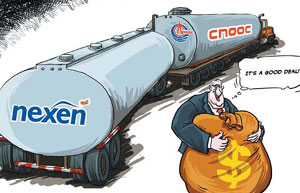Chinese companies endeavor to build up global brands
Updated: 2013-09-17 07:24If Chinese companies shed the national image of having poor-quality goods, they may be able to gain a loyal consumer base, which is essential to the success of branding.
Another approach that China can take in brand-building is the slow-and-steady strategy that Steenkamp has dubbed the "Asian Tortoise Method".
China's neighbors, Japan and South Korea, used this model to establish themselves in the global market.
It takes time and patience to create a reputable brand. It took the Japanese 20 years and the Koreans a little more than 10 years to do it.
When South Korea's Hyundai began selling its cars overseas, it had a negligible market share.
"By providing a top-quality warranty," Steenkamp said, "Hyundai was able to attract consumers." Today, Hyundai vehicles are perceived to be of high value and frequently score higher than BMW in some areas of quality.
China can also deploy this tactic of offering good warranties and letting product quality speak for itself over time.
Haier Group is an example of a Chinese company that has moved up in rankings by slowly migrating to higher quality and better brand premiums. It has become the world's largest white goods manufacturer.
Companies can also learn from successful domestic brands, such as Beijing-based Lenovo, and recycle the strategies used by them.
Lenovo Group Ltd is one of China's most prominent international brands and has overtaken Hewlett-Packard Co as the world's leading personal computer producer by volume. The prosperity of the company stems from its ability to be adaptive to the global market and the way in which it is managed.
Lenovo is managed much like a privately owned Western company, and beyond the seed money, there is little government interference.
Most senior executives at the company also haven't been Chinese citizens. Many are recruited in Europe and the US. This allows the company to have access to a more global view and create innovative products that are attractive not only to domestic consumers but overseas ones as well.
Other enterprises can follow in the footsteps of Lenovo and seek employees with knowledge of the global market.
Businesses can also overcome the issue of poor national image by buying global brands from Western multinationals. TCL Corp and Lenovo are examples of companies that have bought established Western brands and used their trusted names to gain a footing in the competitive global market.
Vertical integration through acquisition helped Lenovo rise and grow. In 2005, Lenovo announced its acquisition of IBM Corp's PC division, giving Lenovo rights to the IBM name. Mergers and acquisitions with other existing and reputable companies can be a good way for China to introduce products.
The bottom line is that China has to build a brand with better value. The cost of labor is rising. It is the next logical step.
The author is a freelance journalist based in Beijing.
- BYD exports three electric cars to Thailand
- Grid gets first jolt of residential solar power
- US now largest buyer of China's exports
- China's outbound M&As on the rise
- Tobacco control may entail price, tax rises
- Quanzhou becomes pilot financial reform zone
- New automobiles shine at Geneva Motor Show
- World's longest high-speed rail 'on track'
- Jiugui Liquor involved in plasticizer scandal again
- Accident reignites school bus safety concerns
- China to revise labor law
- Trademark registration under scrutiny
- Dinner ban takes toll on liquor firms
- CIC tables bid for London's Chiswick Park
- Property buyers eye overseas market
- Call for law to protect personal information
- China to cut train ticket prices
- Christmas business
- Solar industry to get jolt from new policies
- KFC chicken under spotlight















